The Most Rare Airborne 1911 of All Time?
July 13th, 2021
4 minute read
When we think of the M1911 pistol as an “airborne” firearm, we normally think of it in the hands of WWII paratroopers, or carried in a holster by American aircrew. Rarely do we consider it as the primary armament of a combat aircraft. However, in this case you can file it under “truth is stranger than fiction” because that is exactly what this modified M1911 was used for.
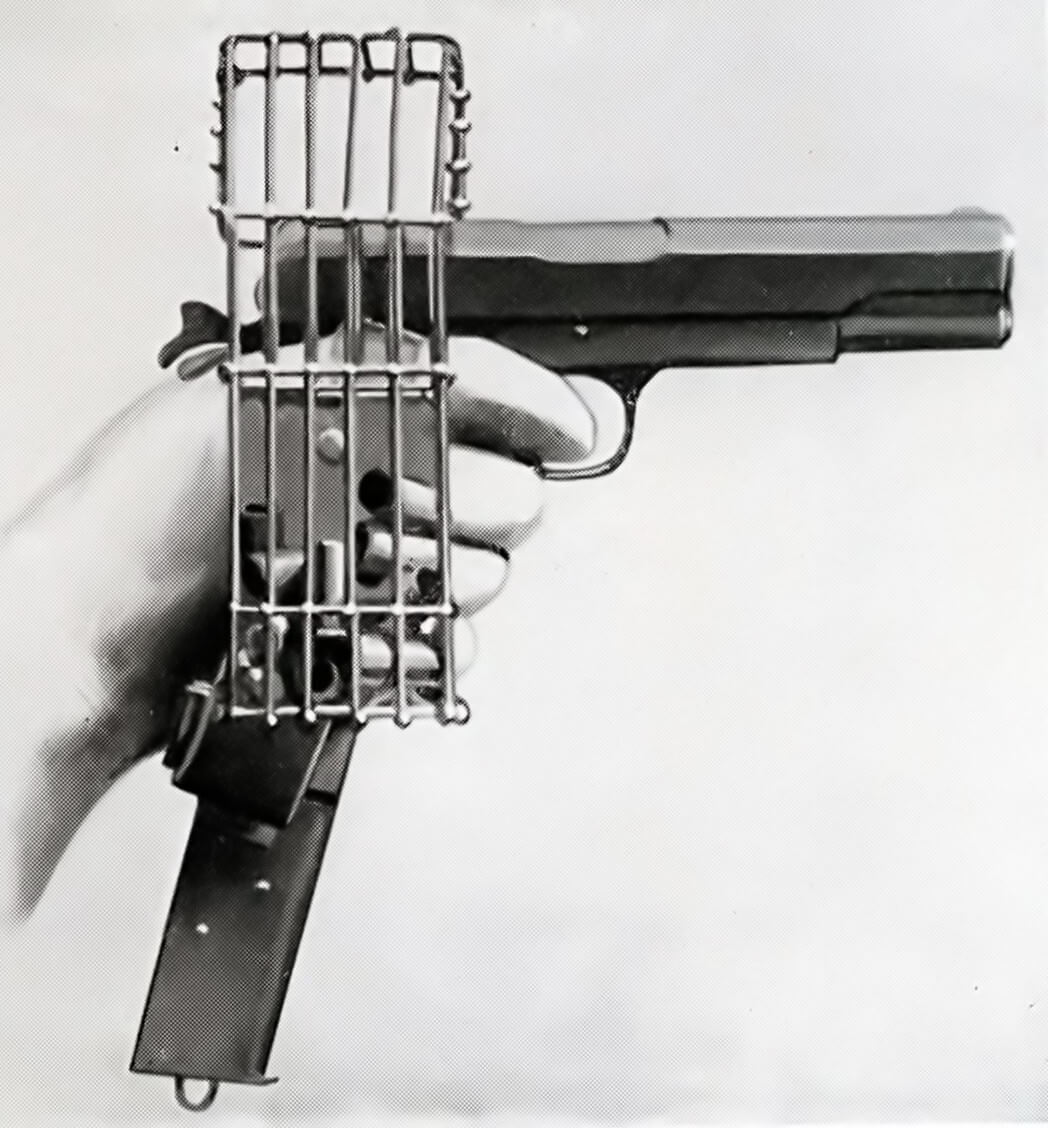
Early Aerial Combat
In the earliest days of World War I, unarmed reconnaissance aircraft were making regular trips over the battle lines to take photos and make reports of enemy troop movements and positions. At first, opposing flyers would wave to or salute their counterparts, flying those early crates was dangerous enough.
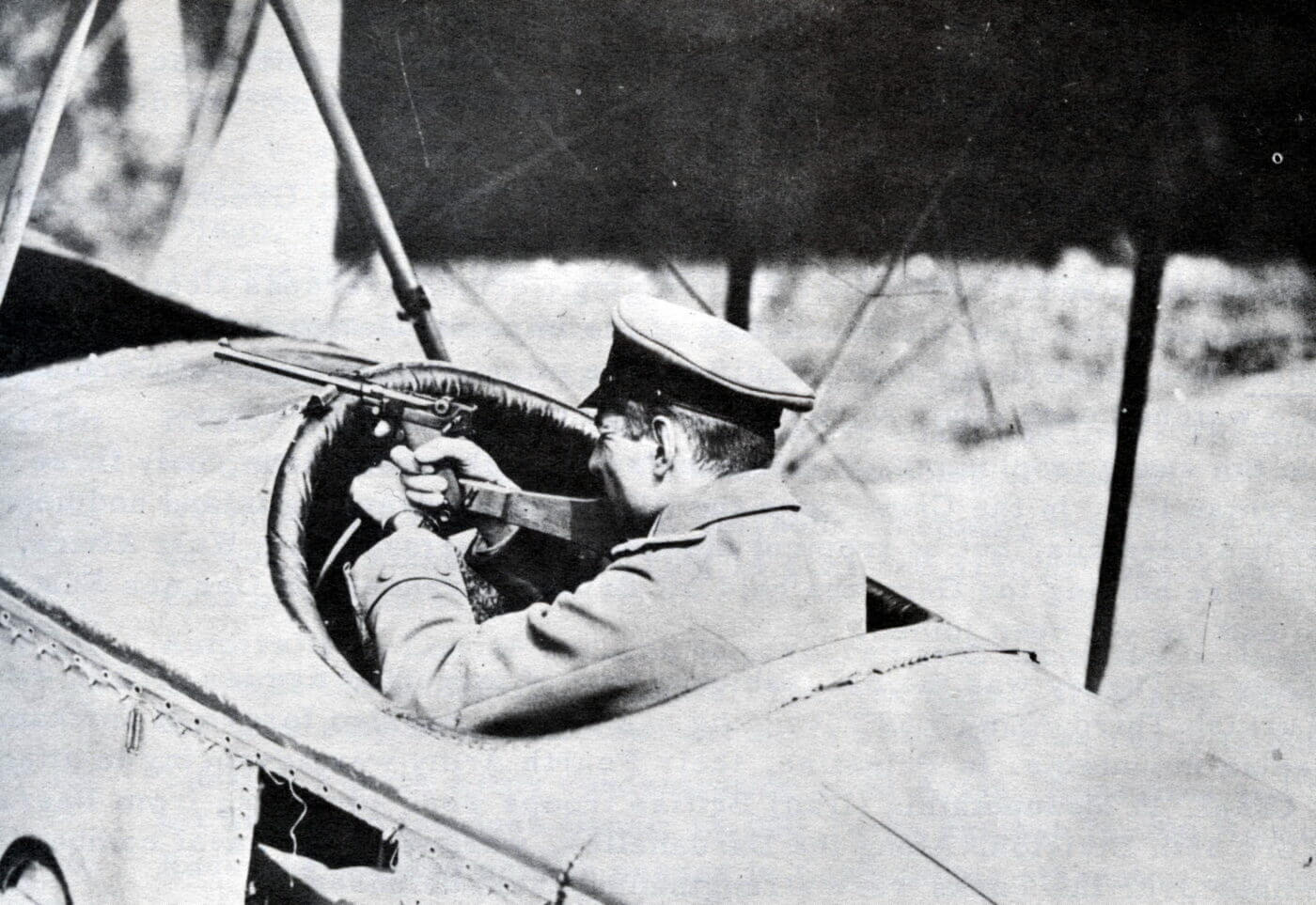
But chivalry in the air did not last long, and soon all sorts of odd weapons were carried aloft for a chance at knocking an enemy plane out of the sky. Rocks, darts (flechettes), lengths of chain, and even a grappling hook dangled on a rope were tried. Long-arms were brought to bear, rifles, carbines and the occasional shotgun.
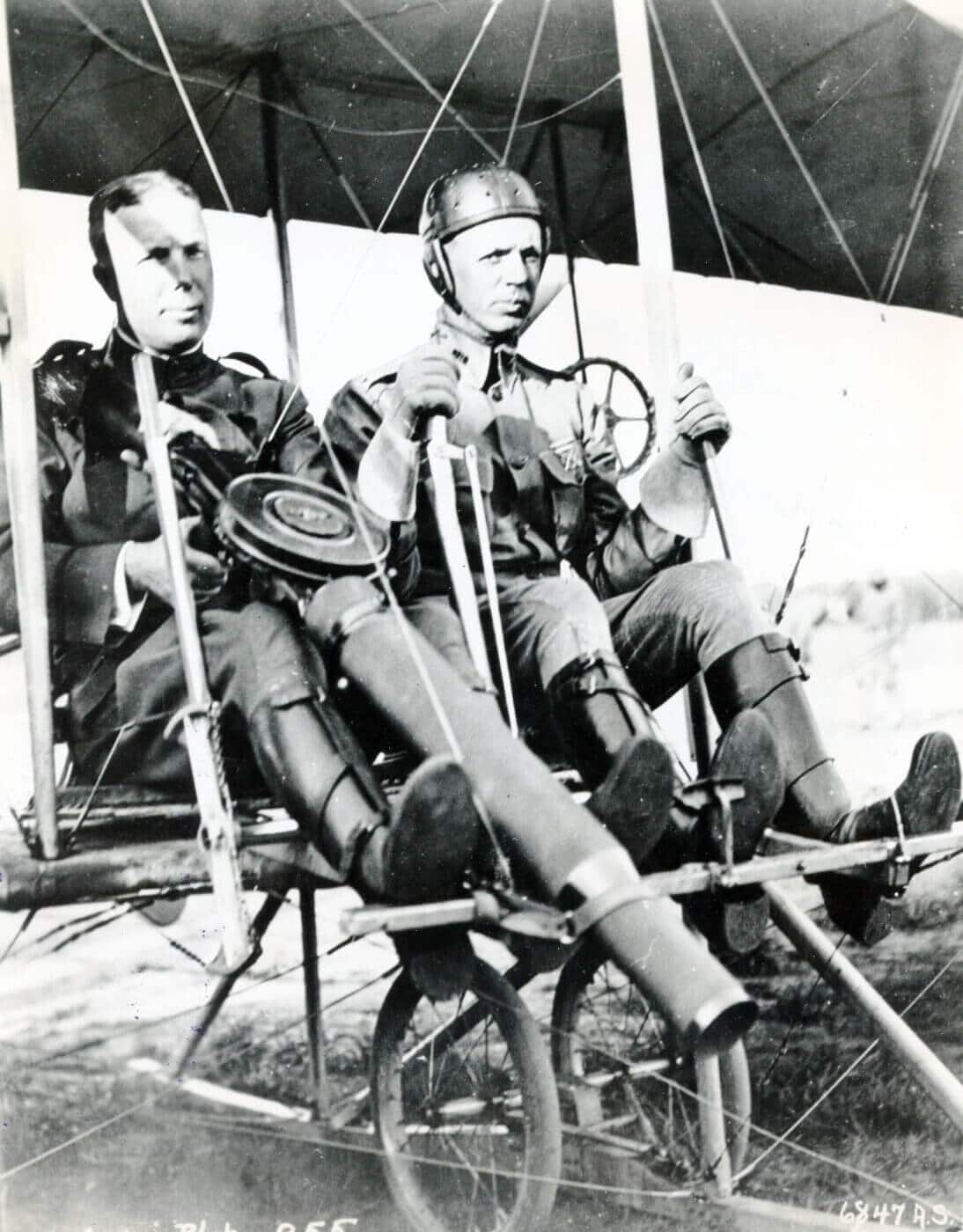
Ultimately, in those strange early days of aerial warfare, when machine gun armament was still a dream, pistols were the weapon of choice for many pilots and observers. A number of British officers had privately acquired M1911 pistols, and some those .45s found their way into the Royal Flying Corps.
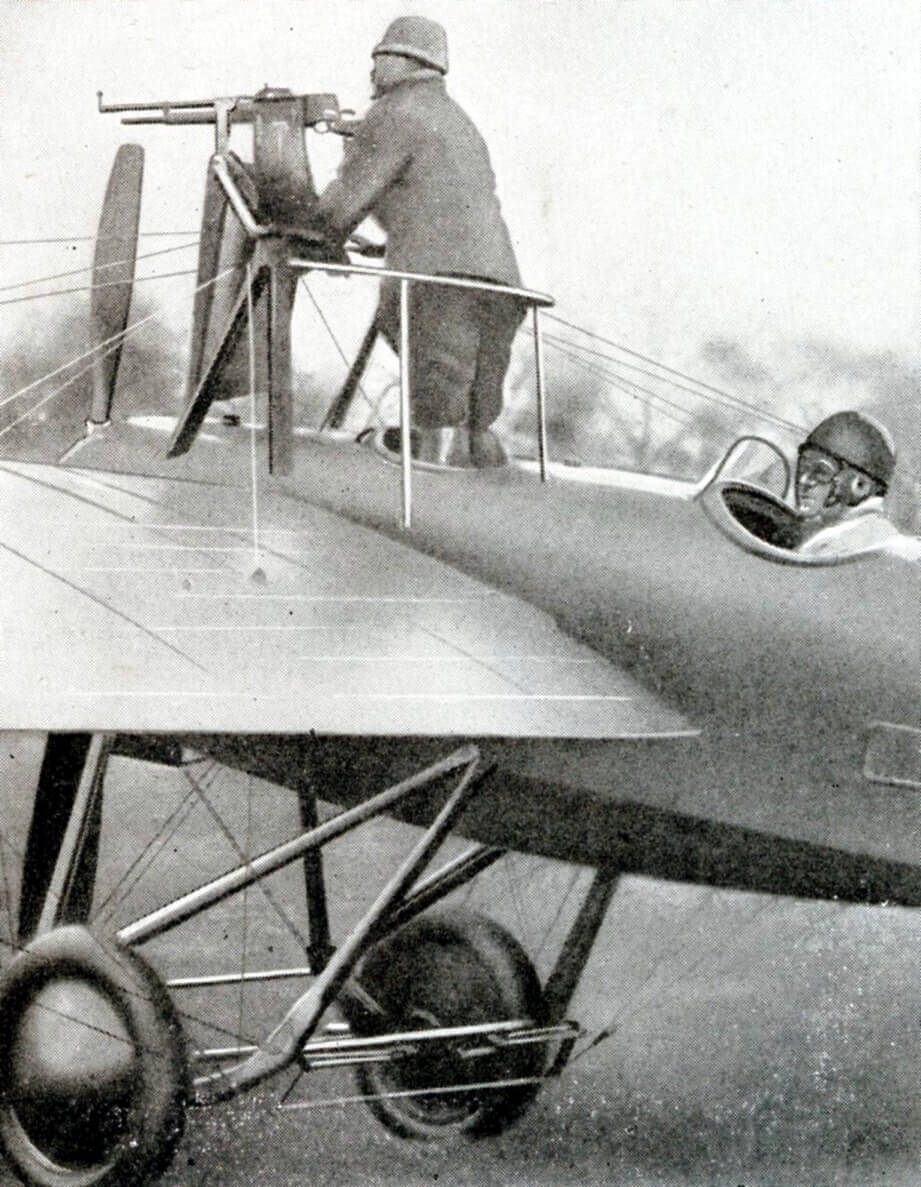
Why the Cartridge Catcher?
There were two primary styles of World War I aircraft. Aircraft with a forward-mounted engine were called “tractors,” and aircraft with rear-mounted engines were called “pushers.” Tractors were faster and more powerful, but the forward-mounted propeller was in the way of firing in that direction. As World War I progressed, machine guns were, at first, mounted at odd forward-firing angles to stay outside the propeller arc, while other guns were mounted on the top wing, to fire over the propeller arc. Until the challenge of fitting a forward-firing gun synchronized to shoot through the propeller was solved, most early “tractor” aircraft relied on an observer’s gun mounted in the rear cockpit.
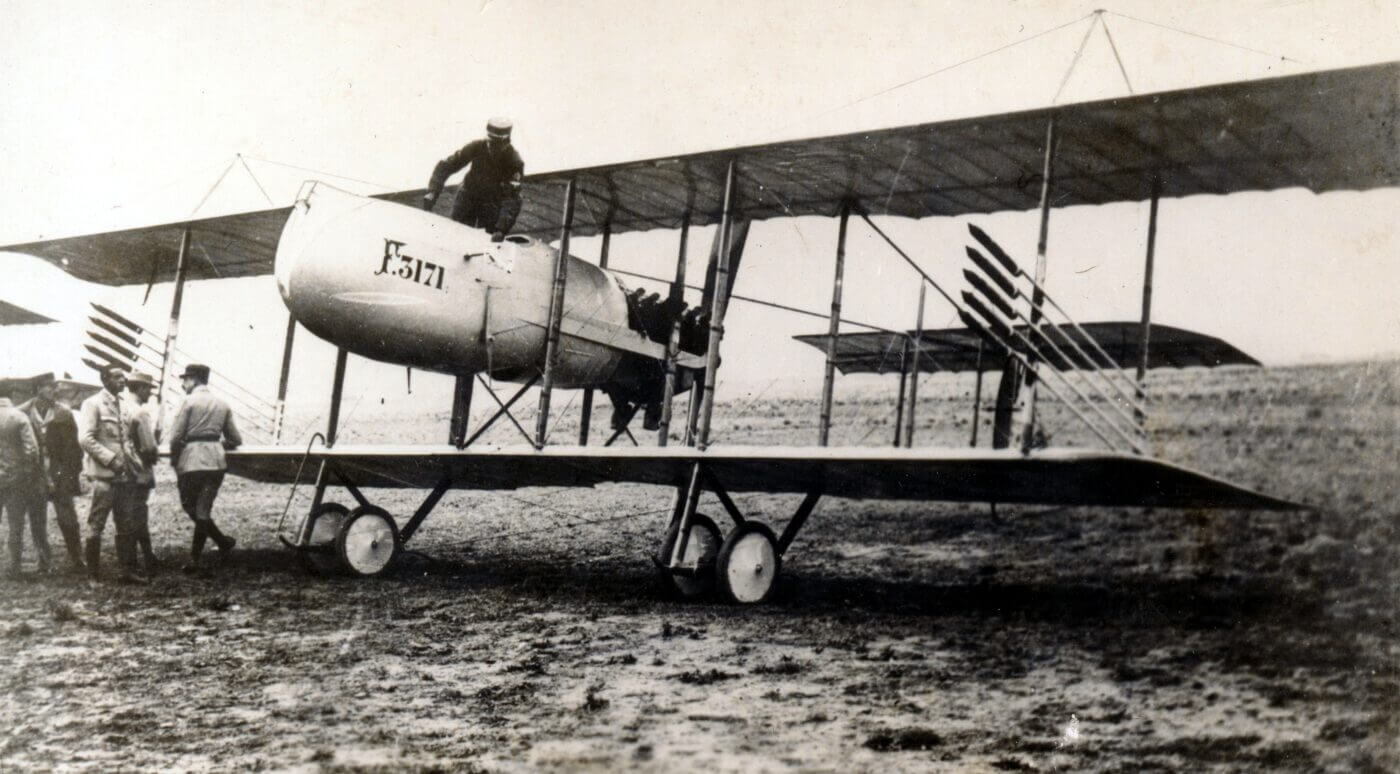
Pusher aircraft designs were quite slow and nearly blind to the rear. However, their forward view was excellent, and there were no worries about shooting off one’s own propeller when firing to the front. For a short time, “pusher” aircraft became the best of the early aerial gun platforms. However, danger from “friendly fire” was always present. It became an absolute necessity to develop methods of catching spent casings, as the brass passing rearwards in the aircraft’s slip stream could easily shatter the propeller spinning behind. So that’s how an otherwise normal M1911 came to be fitted with a cartridge-catching cage.
More Questions Than Answers
There is only one known photo of a M1911 set up in this fashion. I have included that image here to give you a look. I also asked my friend Kurt Pakan to illustrate this exceptionally rare M1911 in color.
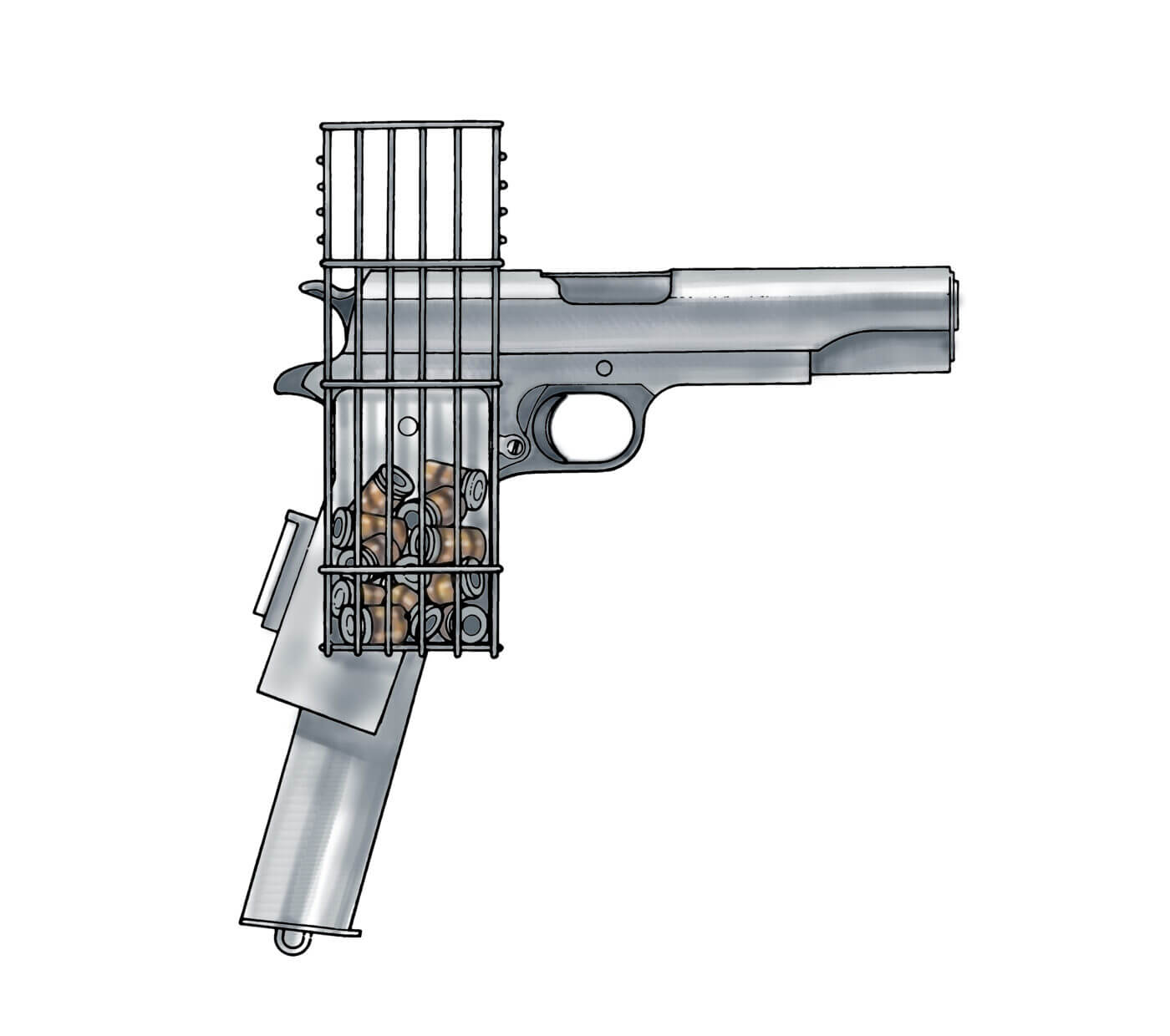
Immediately, many questions come to mind:
- Who designed and built the spent-casing-catchers?
- How many did they make?
- How many made it into combat?
- Who made the extension magazines?
- How many rounds did they hold?
These are all good questions to which I have no good answers. The most reasonable assumptions we can make are that not many were ever made and even less made it into action. As for the extension magazines, that has been a topic of debate for some time. It seems likely that the one pictured held 14 to 15 rounds. Some privately produced extension mags (“trench magazines”) are rumored to have held 20+ rounds. For the moment anyway, the details of those unique World War I M1911 accessories are lost in time. Maybe one day we will have our answers, but today we just have the questions.
Editor’s Note: Please be sure to check out The Armory Life Forum, where you can comment about our daily articles, as well as just talk guns and gear. Click the “Go To Forum Thread” link below to jump in and discuss this article and much more!
Join the Discussion
Continue Reading
Did you enjoy this article?

 252
252






